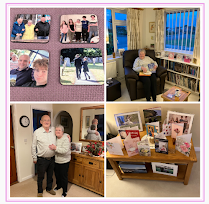 During the next 24 hours I intend to try WSPR mode beaconing on both 10m and 6m to see if I get any success during the peak of the Perseids meteor shower. I've no idea how this mode will work with MS and a basic QRP system with small antennas. Should you get a chance, do set your WSPR system to listen on 10m and 6m and log any reports to the WSPRnet logging site. Set your RX to 28.1246 MHz USB or 50.2930 MHz USB to receive WSPR signals.
During the next 24 hours I intend to try WSPR mode beaconing on both 10m and 6m to see if I get any success during the peak of the Perseids meteor shower. I've no idea how this mode will work with MS and a basic QRP system with small antennas. Should you get a chance, do set your WSPR system to listen on 10m and 6m and log any reports to the WSPRnet logging site. Set your RX to 28.1246 MHz USB or 50.2930 MHz USB to receive WSPR signals..jpg) Although probably not by MS propagation, my 10m WSPR signal was copied by S51CN tonight at 5w, 1W and then 50mW. At my lowest power setting the SNR was -22dB, suggesting that even 10mW would have been copied, but I've now run out of attenuators so can't get any lower tonight!
Although probably not by MS propagation, my 10m WSPR signal was copied by S51CN tonight at 5w, 1W and then 50mW. At my lowest power setting the SNR was -22dB, suggesting that even 10mW would have been copied, but I've now run out of attenuators so can't get any lower tonight!Bojan, S51CN kindly sent me a screenshot of my signals in Slovenia (see left).







